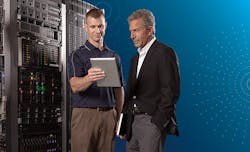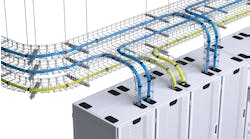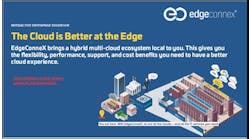Taking Your Customer Experience to the Next Level
In this edition of Voices of the Industry, Nicola Buckley, Executive Vice President, Global Service Delivery at Park Place Technologies, contemplates how the customer experience should be a primary driver for business growth.
Nicola Buckley, Executive Vice President, Global Service Delivery, Park Place Technologies
During the past year, businesses around the world have had to reimagine their business models and operations multiple times. Most companies had to pivot to remote working, creating an instant demand for new technologies and services that had previously considered but never fully implemented. With that demand, comes the need to identify partners and service providers who can help businesses progress in the CX journey and to better understand customer end-to-end needs. Why is delivering the customer experience so important? Recent research by Ipsos demonstrates the gap between internal and customer perception can vary widely, when 91% of CEOs stated that they believed that they delivered a superior experience, yet only 30% of their customers agreed. So how do you close the gap and build a better experience and ongoing relationship with your customer?
First, take time to truly listen to your customer. The strongest customer experience always starts with the human element. Building a strong and effective experience platform is more than just a process, it’s an opportunity to build an emotional relationship with your customer across all touchpoints and that starts from the top. To truly connect with customers and understand their experiences, business leaders must spend time with them. And that means really getting to know them, and not just dealing with events when they need services. Share plans and ask for input.
While understanding needs is key, it’s critical to always focus on allowing your customers space to make the right decisions and choices for themselves. Instead enable choices while offering a very simple entry point into accessing services. Provide simple tools that remove the stress and worry out of managing complicated business environments.
Many companies overlook the need to engage the whole organization, including its support functions, in their quest to build a memorable customer journey, but you should align your teams from the outset. To accomplish this, it’s critical to avoid “silos” in your organization. Collaboration across functions is key. The service team should be a tool for the sales team and the sales team can serve as support for the service team.
Service level agreements (SLAs) are a transparent and accountable way to meet and demonstrably exceed client expectations and act as proof points along the journey. Flexible service level agreements and co-terminous contracts should fit needs to gain an operational advantage in maintaining servers/storage and networking devices. Customers should know they can, and know how to, consolidate multiple vendors, and add or delete equipment whenever needed without penalty. Parts depots strategically located around the globe can help ensure that field service is able to meet a customer’s SLA, based on their specific equipment configurations.
Experienced teams of field service and advanced engineers are key to meeting SLA agreements. Constant, ongoing training across all Tier One OEMs, coupled with keen understanding of each client’s expectations, put these “front line workers” at the forefront of SLA compliance and reporting.
Real-time monitoring is also key to meeting SLA and customer experience standards. Portals, mobile apps, and trackers should offer real-time information on assets, contracts, open tickets status, and event history.
According to Ipsos, 86% of people are prepared to pay more for a better experience. That means a better customer experience leads directly to increased revenue. So a well-aligned, embedded service team can provide an experience that will help drive revenue without ever moving a product. There are two ways to drive customer growth: organically and through acquisition. Organic growth is driven by good service and performance by the team in the field. This leads to customer satisfaction and loyalty, which in turn leads to greater revenue.
On the acquisitions front, expanding your business’ capabilities and offerings through acquisition is a fast way to accelerate growth. However, taking this approach requires fast integration of teams and solutions. It’s vital to quickly bring the service team you’re acquiring into the culture of your organization so the same level of service can be maintained. The new team must be trained to understand the expectations at the outset of the relationship and given the necessary tools to succeed.
Looking ahead as you assess the customer journey, it’s imperative to identify moments that matter most and what your customers need, expect, and offer ideal experiences for them. As we move forward with business recovery from the pandemic, companies with the closest personal touch will be the ones that succeed in delivering a top customer experience.
This article was written by Nicola Buckley, Executive Vice President, Global Service Delivery, Park Place Technologies. Park Place Technologies simplifies the management of complex technology environments worldwide, with a network of parts to support data centers stored regionally, locally and on-site to allow for fast parts distribution and service to drive Uptime.





